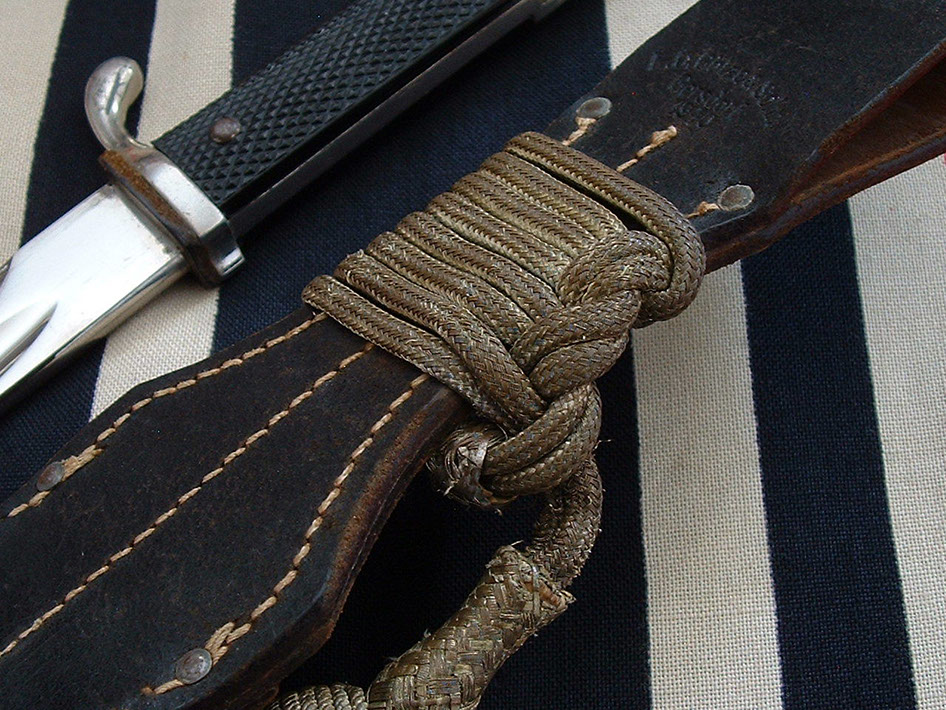
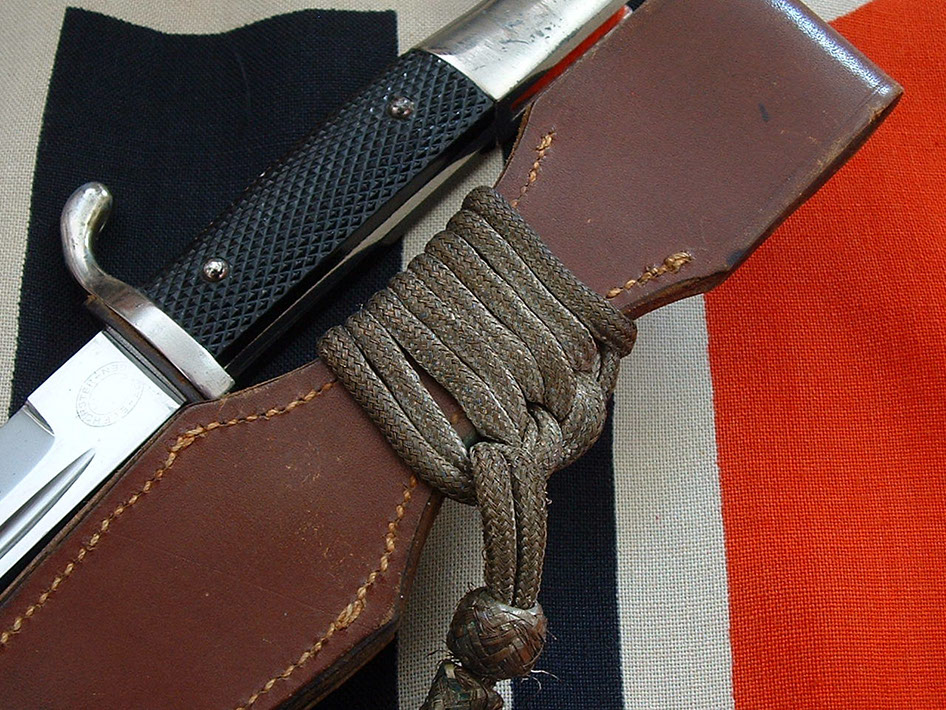
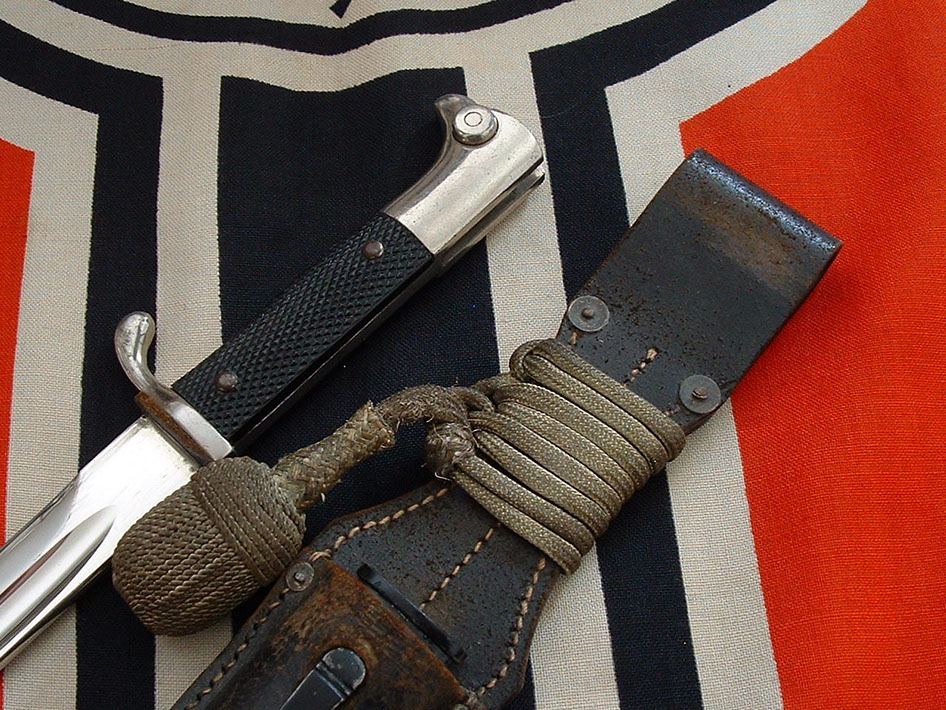
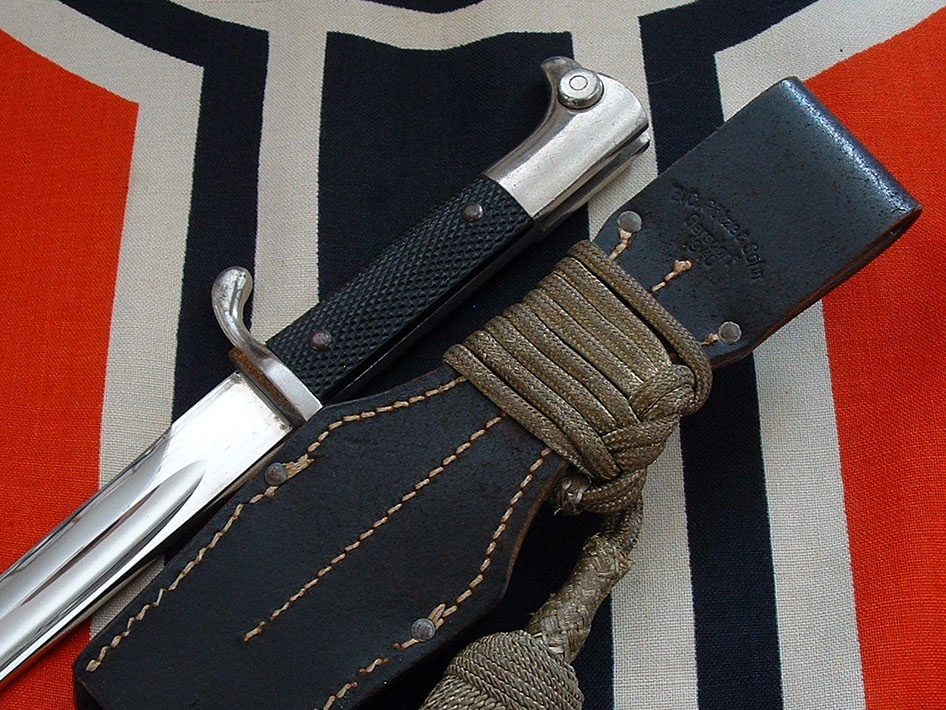

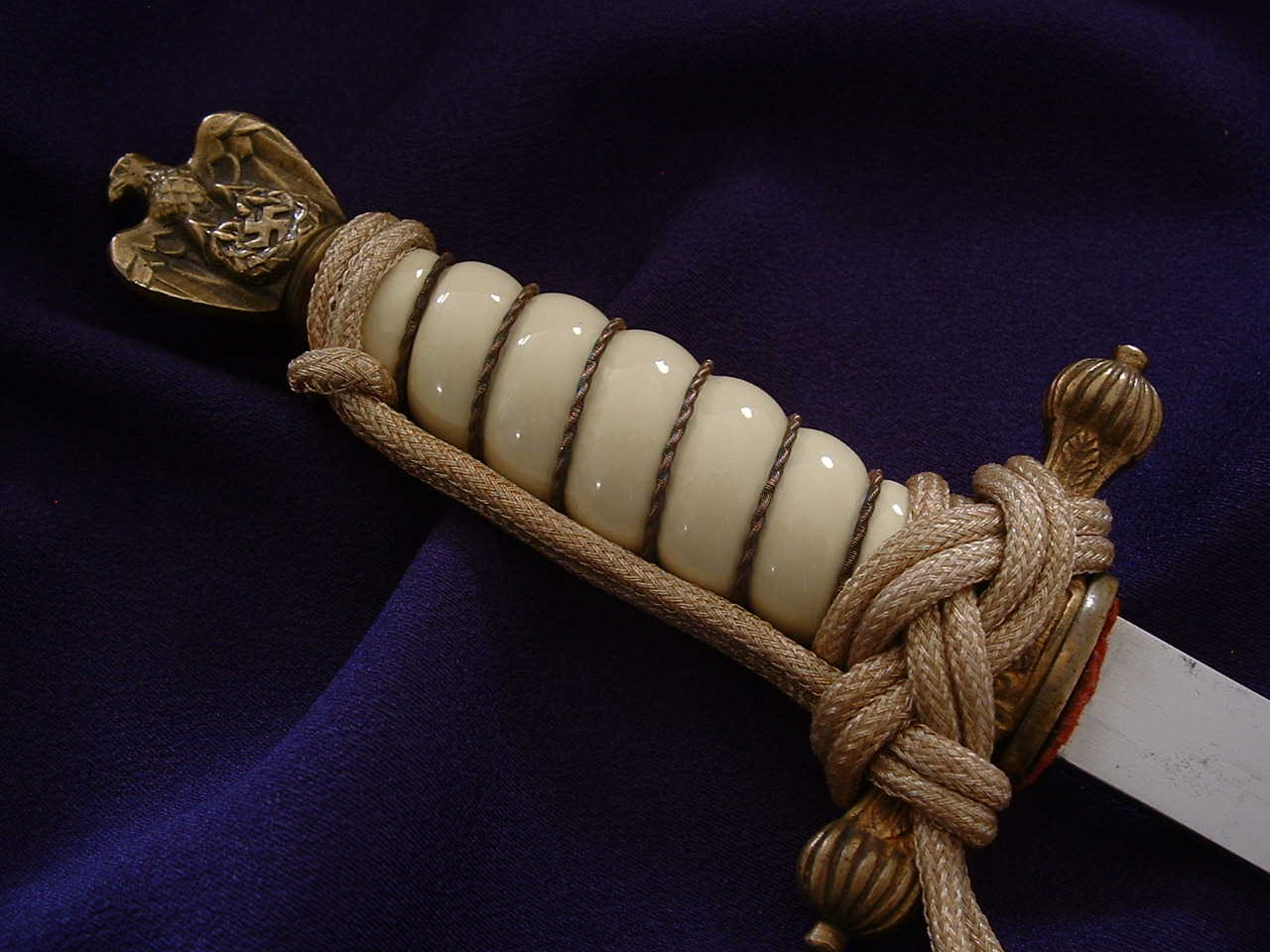
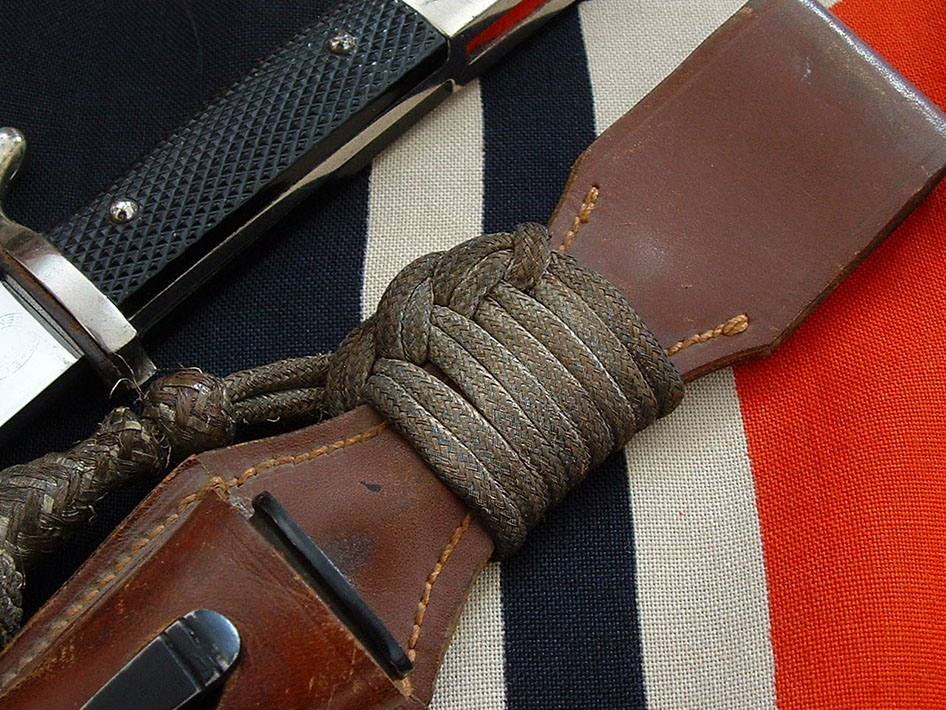
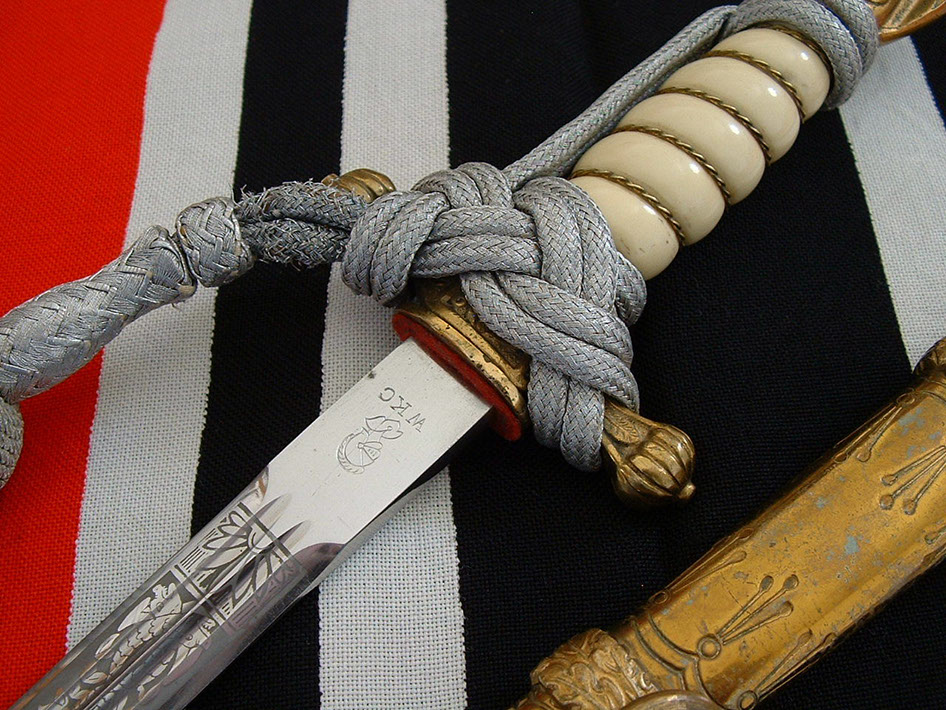
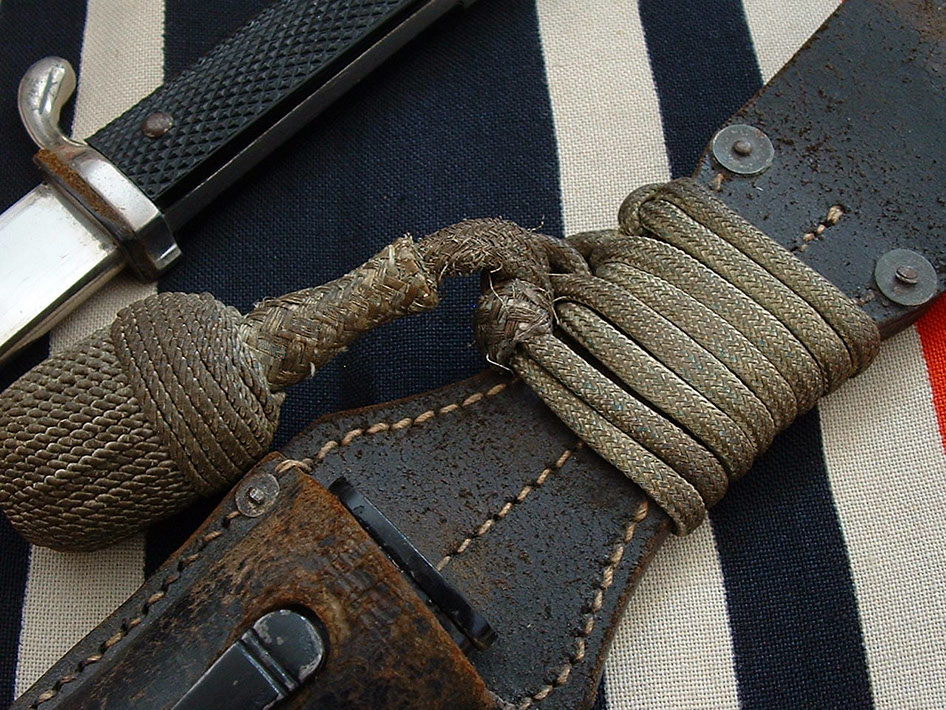
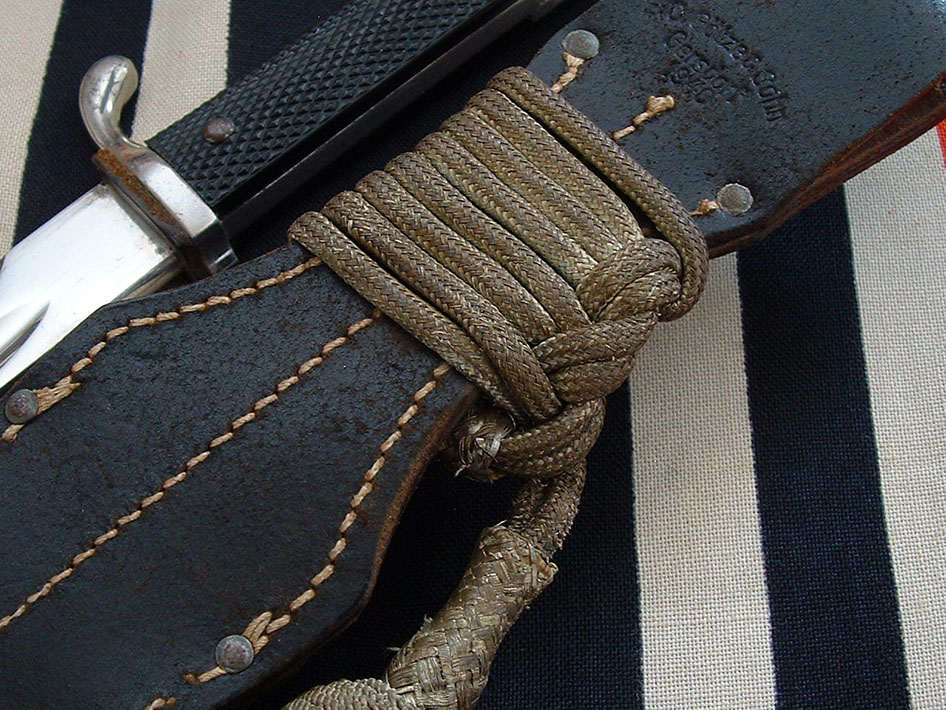
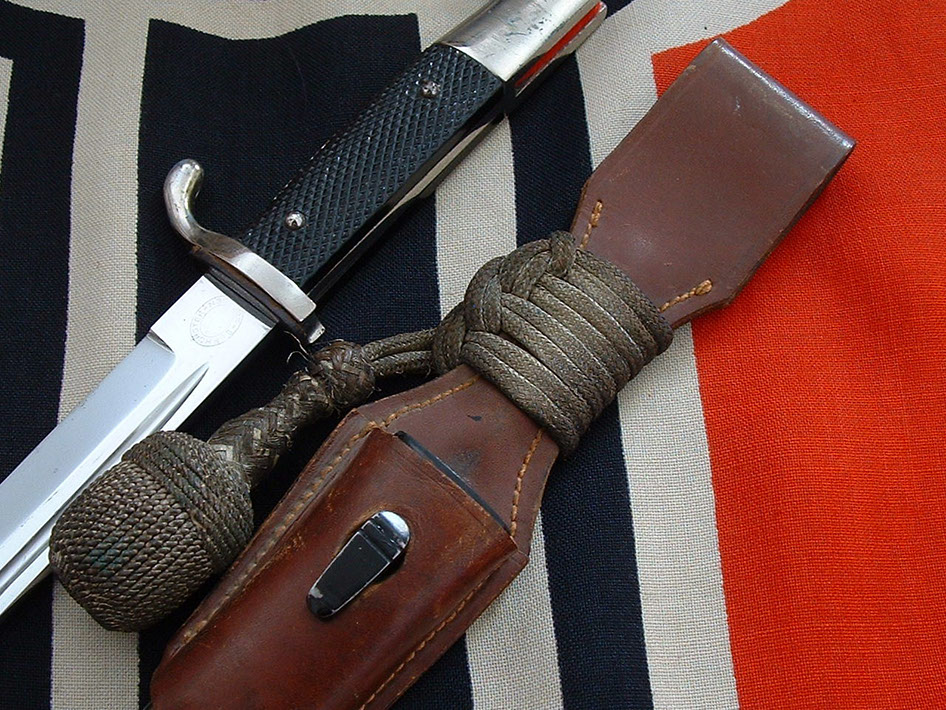
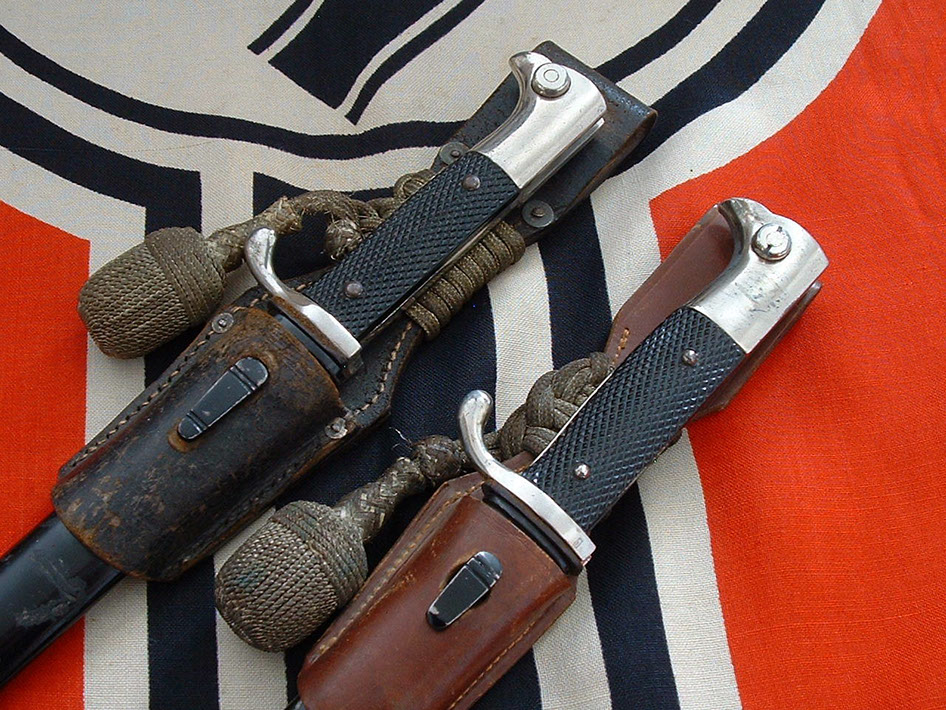
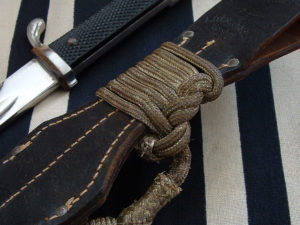
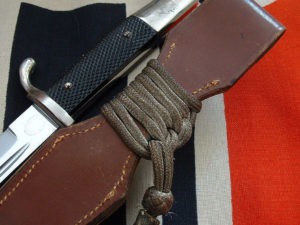

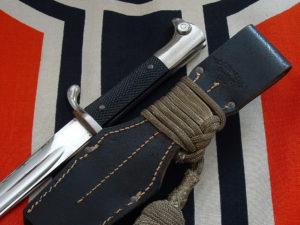
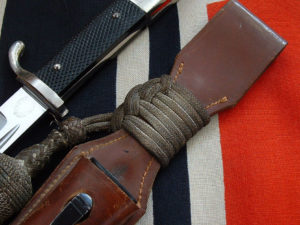
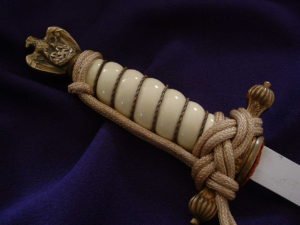
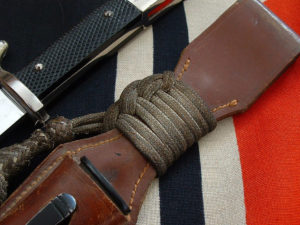
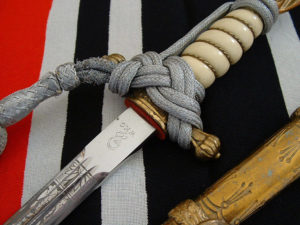
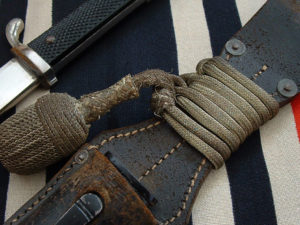
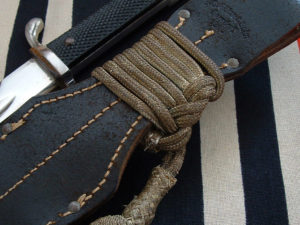
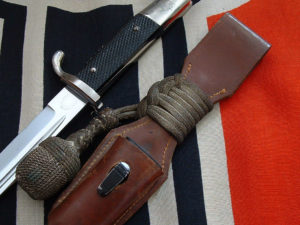
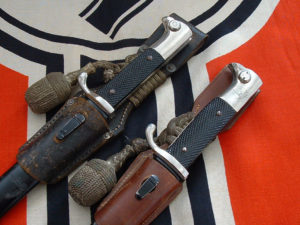
Kreigsmarine Portapees
In early days when a cavalry soldier fought on horseback wielding a sword as his weapon, a portapee laced to the hilt of the weapon was a very important survival device. With the cord of the portapee wrapped around the warrior’s wrist and also the hilt of the edged weapon, if the sword were to be knocked from his grasp, he might be able to recover it an continue the fight. Long ago warriors used these knots to gain control of their swords during a battle, which may have made the difference between life and death. But during the 3rd era, these decorative knots became strictly ornamental, and truly look neat as an accoutrement to any dagger or sword.
Each branch of military service had a certain prescribed pattern, in which to tie a portapee to the edged weapon that they wore. And none were more cool than the knots that we see on edged weapons carried by the 3rd Reich Navy. In the 1937 dress code regulations for the Kreigsmarine, there were 10 specific rules that addressed the formalities pertaining to the wearing of 3rd Reich edged weapons. One of those rules describes the instructions on how the portapee for the dirk is to be tied to the grip an crossguard, in a manner know as the “clove hitch”.
Most 3rd Reich edged weapons collectors familiar with Navy daggers, has certainly seen the super neat interlaced pattern of a portapee, when it is correctly tied to the hilt of one of these edged weapons. To this day I marvel at these beautiful toned knots, when ever I view a navy dagger with one tied on it. For those collectors who are not aware of it, these knots are tied quite different of how you might actually think. You don’t start at the pommel as you would when tying a Heer portapee, but quite the opposite. You start at the left side of the crossguard, and lace the cord in a reverse pattern, finally working your way up to the pommel as a last step. You have to wonder, who in the world came up with the idea and pattern, to tie these beautiful Kreigsmarine dagger knots in this fashion?
Along with the dagger and the sword, there is one other Kreigsmarine edged weapon which was worn with a portapee. One of which most collectors have never heard of, let alone ever seen. And that is the Heer style dress bayonet, which was worn during marching formations, landing drills, and parades for the Commander – in- Chief’s of the Navy, Army, and Air Force. And certainly last but not least, all ceremonies involving the Kreigsmarine, at which the Fuhrer was present.
These bayonets in which Navy portapees have been tied around the upper portion of the scabbard frogs, are fantastic to examine. On top of that, I would have to believe that they are incredibly rare, as I’ve only seen 1 other example ever. Take a look at the complex tie on these 2 bayonets, as they truly are artistic in the method that they have been laced. And also, give us a shout if you have one of these 3rd Reich Kreigsmarine bayonets in your collection. As we would love to add the picture of it to this topic.